Results
-
 £159.00
£159.00Greek Folk Song Suite No. 2 - Franco Cesarini
After the great success of the Greek Folk Song Suite that has lasted for over twenty years, Franco Cesarini once again ventures into the long and rich tradition of Greek folk music. In his Greek Folk Song Suite No. 2, the three movements that form the piece are named after the three dances reworked by the composer.The first movement, Samiotissa is a kalamatianos, whose most distinctive feature is the irregular 7/8-time signature. It is a festive dance, today considered the Greek national dance, which has roots dating back to antiquity.The second movement, Kato sto jalo is a zeibekiko, a slow-paced dance performed by only one man at a time which was apparently originated among the warriors of Ancient Anatolia.The third and last movement, Chasaposerviko, is the fast part of the hasapiko dance and is characterized by its more extensive form.A new journey into the Greek folk tradition that will delight both performers and audience.
Estimated dispatch 7-14 working days
-
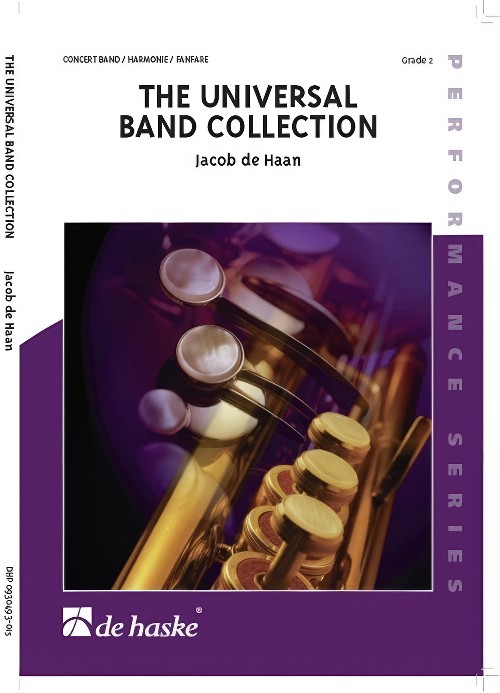 £118.99
£118.99The Universal Band Collection (Concert Band - Score and Parts) - De Haan, Jacob
A collection of 5 short works in pop style which can be performed by any kind of compilation. The titles can be presented on the programme as separate works but the Universal Band Collection can also be performed as a complete suite. From a didactic point of view it is a suitable work to teach musicians something about the structure in music. For this purpose not only the big structure but also the small structure was kept very clear.Western Girl: A girl from the west of the USA rides her horse across the prairie, dreaming of her future. The rough structure: introduction - theme in a blues scale - the same thing in a different instrumentation - finale.Just a ballad: A ballad in pop style with a rough A-B-A form. First there is the introduction of the main theme (A), then follows a tenor melody in minor with a rhythmical reference to the main theme (B). Finally there is the main melody, performed tutti with a different rhythm in the drums (A').Play the Game: An English saying meaning: play fairly. Playful music in up-tempo with a wink to China, where almost all games are manufactured nowadays. Once again an A-B-A structure here.San Diego: A Mexican fugitive enjoys his freedom in America but also remembers his place of birth with melancholy. A sad minor melody with a straight trendy beat appears twice. The second time it has a slightly different instrumentation, in which the muted trumpets represent the Mexican feeling.Final Dance: Eventually there is a dance with an introduction in renaissance style, followed by a fast dance in rock style. All this composed in a classical song structure: introduction, verse, bridge, chorus, shortened verse, bridge, chorus, chorus.Duration: 10:30
Estimated dispatch 7-14 working days
-
 £99.99
£99.99The Nutty Nutcracker - Pyotr Ilyich Tchaikovsky
Imagine Tchaikovsky on a vacation trip that was arranged by a really, really bad travel agent. That, in a "nutshell", describesThe Nutty Nutcracker. This humorous style parody of what may arguably be some of the best-known melodies on the planetis a certain crowd pleaser. Everybody knows the tunes, but not like THIS! The Arabian Tango; The Chinese Hoedown; TheWaltz of the Mariachi Flowers; The Dance of the Klezmer Clarinets and MORE. You get the idea! Great fun for everyone.You'llwant to use Mike Hannickel's A Nutty Nutcracker again and again.Whoops! Where are we?
Estimated dispatch 7-14 working days
-
 £54.95
£54.95Ding Dong Merrily on High (Concert Band - Score and Parts) - Smith & Story
Based on a traditional French dance melody, this popular holiday favorite has been scored for performance after only a few months of instruction. Arranged to accompany Band Expressions Book One, it is attainable for students in the middle of any first-year method. Perfect for your first holiday program again and again. Duration: 1.50
Estimated dispatch 7-14 working days
-
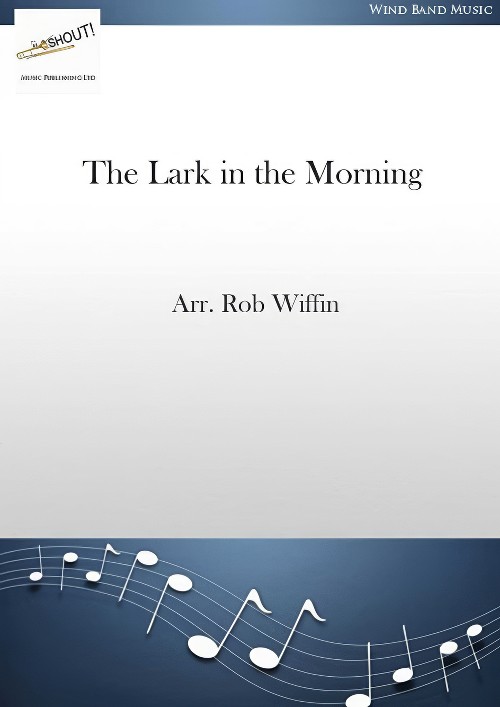 £36.95
£36.95The Lark in the Morning (Concert Band - Score and Parts) - Wiffin, Rob
A vibrant folk dance set for full band. This is one of several folk tunes associated with this title. It's a jig in a minor key with suitable drumming which plays with and across (in hemiola style) the 6/8 rhythm. The setting is dramatic and intense while maintaining the feel of the jig. The outer sections are balanced by a quieter section which momentarily takes the heat out of the music before the dance takes over again and builds to a conclusion.Duration: 3.15
Estimated dispatch 7-14 working days
-
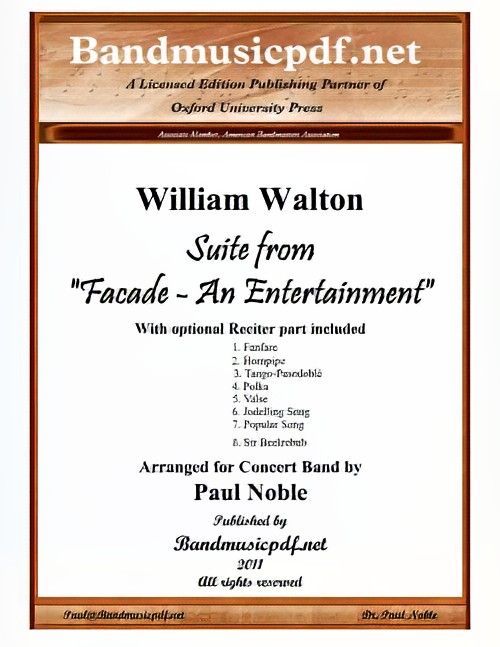 £375.00
£375.00Facade - An Entertainment, Suite from (Concert Band with Optional Narrator - Score and Parts) - Walton, William - Noble, Paul
This Suite from Facade - An Entertainment, composed by William Walton, with poems by Dame Edith Sitwell, presents for the first time a grouping of movements selected and arranged by Paul Noble for Concert Band and optional Reciter. The original composition was written between 1921 and 1928, containing forty-three numbers. They had their origin in a new style of poetry that Edith Sitwell evolved in the early 1920s, poems that her brother Osbert later described as 'experiments in obtaining through the medium of words the rhythm and dance measures such as waltzes, polkas, foxtrots... Some of the resulting poems were sad and serious... Others were mocking and gay... All possessed a quite extraordinary and haunting fascination.' Possibly influenced by the dance references in some of the numbers, Osbert declared that the poems might be further enhanced if spoken to a musical accompaniment. The obvious choice of composer was the young man who lived and worked in an attic room of the Sitwell brothers' house in Carlyle Square W[illiam] T[urner] Walton, as he then styled himself. The now historic first performance of the Facade Entertainment took place in an L-shaped first-floor drawing-room on January 24, 1922. Accompaniments to sixteen poems and two short musical numbers were performed by an ensemble of five players. The performers were obscured from the audience by a decorated front curtain, through which a megaphone protruded for Edith to declaim her poems. This was, as she put it, 'to deprive the work of any personal quality'. The first public performance of Facade was given at the Aeolian Hall on June 12, 1923. By now, fourteen poems had been set, others revised or rejected, and an alto saxophone added to the ensemble. The occasion gave rise to widespread publicity, both pro and contra, and the name of the twenty-one year old W. T. Walton was truly launched. In the ensuing years the Facade has gone through revisions and additions, with full orchestral arrangements of selected movements being made without the Reciter. Former Band Director Robert O'Brien arranged some movements for band, again without Reciter, which are now out of print. So this 'history making' addition is the first opportunity for Concert Bands to present some movements of Facade with poems as originally intended. The luxury of electronic amplification allows the full ensemble to perform without necessarily overshadowing the Reciter. And the arrangements are written with considerable doubling so that the ensemble may play in full, or reduced in size as may be desired for proper balance. And, though not encouraged, the arrangements are written so that the band can perform the music without the Reciter. Program notes are adapted in part from those written by David Lloyd-Jones and published by Oxford University Press in the Study Score of William Walton's Facade Entertainments.
Estimated dispatch 7-14 working days
-
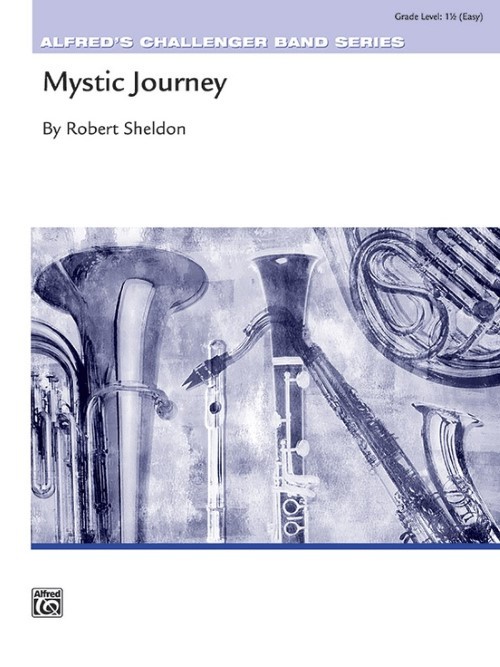 £49.95
£49.95Mystic Journey (Concert Band - Score and Parts) - Sheldon, Robert
Mystic Journey features a dark and ominous opening that leads to a very rhythmic and jungle-like dance. The scoring brings out wonderful colors that even young bands can express. The initial theme reappears before the dance rhythms once again take over, concluding the piece with a burst of energy. Duration: 2.45
Estimated dispatch 7-14 working days
-
 £159.99
£159.99The Spirit of Winnipeg - Georges Sadeler
During the last ice age, Glacial Lake Agassiz was the largest lake in the world, spanning vast areas of Canada and the USA, with numerous lakes forming in its basin, including Lake Winnipeg. The beginning of this composition illustrates how the ice of the prehistoric glacier slowly melts, drop by drop, signaling the end of the ice age. Vegetation in Canada begins to flourish once again, and the first rays of a new era illuminate the majestic Lake Winnipeg. Life reawakens as Canada's indigenous people sing their sun dance, traverse the prairie on horseback, and engage in hunting. The conclusion of the composition pays tribute to this splendid, shimmering Lake Winnipeg and its indigenous inhabitants.
Estimated dispatch 7-14 working days
-
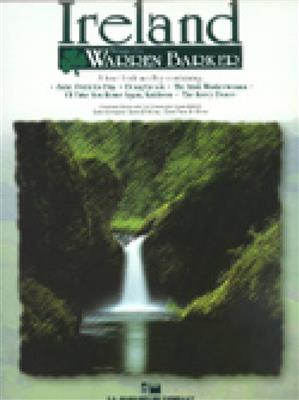 £80.99
£80.99Ireland - Warren Barker
An appealing medley of well known Irish tunes by master arranger Warren Barker. Combines "Saint Patrick's Day", "I'll Take You Home Again, Kathleen", and "The Kerry Dance" to create a lively composition that is perfect for programming by adult bands as well as High School and University groups. Sure to become a standard of the band repertoire.
Estimated dispatch 7-14 working days
-
£96.50
Scenes from Billy the Kid - Aaron Copland
Collage of tunes from the Ballet-Suite of Copland. Included: The Open Prairie Street in a Frontier Town Cowboys with Lassos Mexican Dance and Finale Gun Battle Celebration (after Billy's Capture) Billy's Death OpenPrairie Again. (9:40)
Estimated dispatch 7-14 working days
